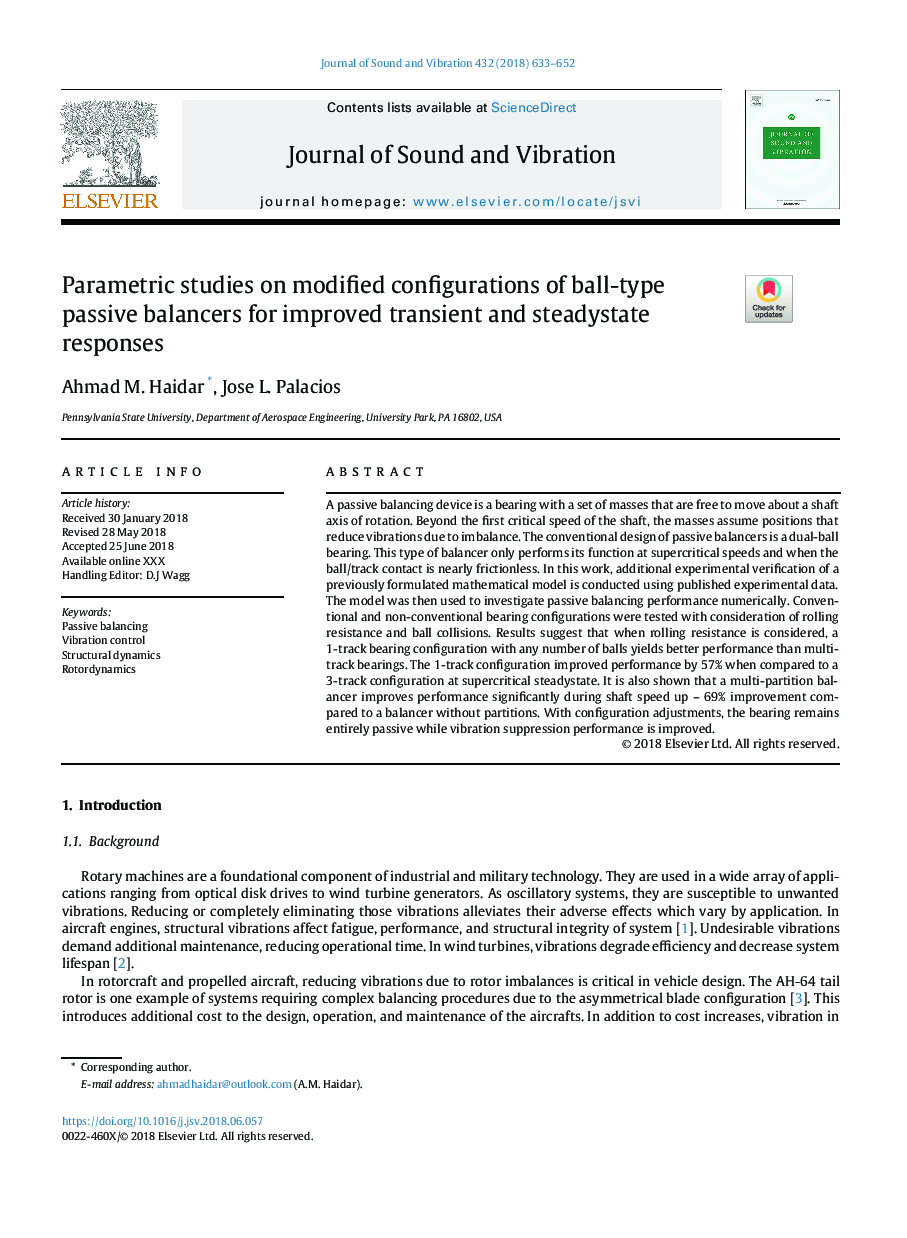| Article ID | Journal | Published Year | Pages | File Type |
|---|---|---|---|---|
| 6752778 | Journal of Sound and Vibration | 2018 | 20 Pages |
Abstract
A passive balancing device is a bearing with a set of masses that are free to move about a shaft axis of rotation. Beyond the first critical speed of the shaft, the masses assume positions that reduce vibrations due to imbalance. The conventional design of passive balancers is a dual-ball bearing. This type of balancer only performs its function at supercritical speeds and when the ball/track contact is nearly frictionless. In this work, additional experimental verification of a previously formulated mathematical model is conducted using published experimental data. The model was then used to investigate passive balancing performance numerically. Conventional and non-conventional bearing configurations were tested with consideration of rolling resistance and ball collisions. Results suggest that when rolling resistance is considered, a 1-track bearing configuration with any number of balls yields better performance than multi-track bearings. The 1-track configuration improved performance by 57% when compared to a 3-track configuration at supercritical steadystate. It is also shown that a multi-partition balancer improves performance significantly during shaft speed up - 69% improvement compared to a balancer without partitions. With configuration adjustments, the bearing remains entirely passive while vibration suppression performance is improved.
Related Topics
Physical Sciences and Engineering
Engineering
Civil and Structural Engineering
Authors
Ahmad M. Haidar, Jose L. Palacios,
